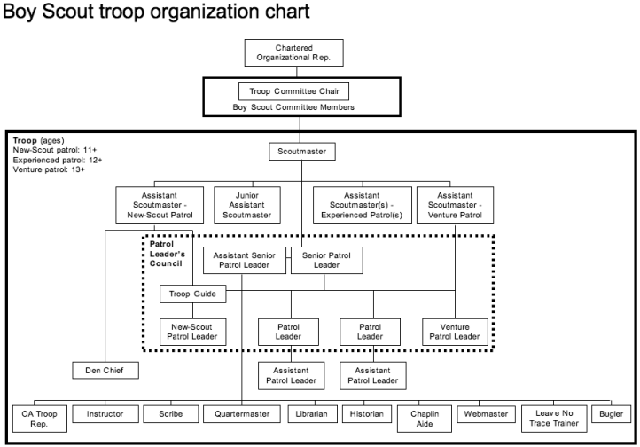About Us
Dues
Currently we do not require any dues for the troop. Our troop provides service for the annual St. Elizabeth Ann Seton Fall Festival. The church has provided us a monetary donation in the past for working the festival in September of the year. We encourage all of the scouts to participate in this event to give back to our charter organization.
Meetings
Troop Meetings
Our Troop meetings are on Tuesday nights. The meetings start promptly at 7:00. Please be a few minutes early for the meetings. The uniform for the meetings will be Class A unless otherwise notified beforehand. If a particular merit badge is being offered, that session will normally precede the Troop meeting for anyone working on that merit badge.
Trips and Summer Camp
The troop tries to do at least one troop activity per month. The Patrol Leaders Council meets each month to draw up a tentative trip schedule. The Troop is always looking for adult volunteers to drive and help monitor the Scouts during the trips.
Generally, trips will leave Friday night, usually around 6:00 PM and return Sunday morning. The Scouts will generally meet at the scout trailer unless a different meeting place is specified. The Scouts will begin loading Troop and personal equipment into the troop trailer and cars of volunteer drivers
The traditional Scouting divisions are Cub Scouting for children in grades K-5, Scouts BSA for youth ages 11 to 17 and Venturing and Sea Scouting for young men and women ages 14 (or 13 and having completed the 8th grade) to 20.
The BSA operates traditional Scouting by chartering local organizations, such as churches, clubs, civic associations, or educational organization, to implement the Scouting program for youth within their communities. Units are led entirely by volunteers appointed by the chartering organization, who are supported by local councils using both paid professional Scouters and volunteers.
The Troop
The troop is the basic organizational component of Scouting. It is your local group of Scouts doing its thing independent of any other troop, but united with all other troops under the Scouts BSA organization. It is assigned a number when it is chartered. We are Troop 239. The typical Scouts BSA Troop is organized as follows:

Ranks and Advancement
Ranks are a means to an end, not ends in themselves. Everything a Scout does to advance and earn their ranks is designed to help them have an exciting and meaningful experience. Education and fun are functions of Scouting and they are the basis of the advancement program. Recognition is gained through leadership in the troop, attending and participating in activities, living the ideals of Scouting, and developing a proficiency in outdoor living and useful skills.
Advancement is a four step process:
- Learn – The Scout studies and learns the requirements for the next rank
- Test – The Scout is tested on the requirements by the PL, SPL, scoutmaster, assistant scoutmaster or other accredited person
- Review – After the Scout has completed all requirements, they will go through a scoutmaster conference. This is to assure they are ready for the board of review. After the scoutmaster conference, they have a board of review with the troop committee.
- Recognition – When the board of review has certified a scout’s advancement, they will be awarded the certificate of rank at a court of honor held during the next scheduled troop meeting.
The ranks in Scouts BSA are:
- Scout
- Tenderfoot
- Second Class
- First Class
- Star
- Life
- Eagle
A Scout may continue working toward Eagle until their 18th birthday unless unusual circumstances exist. If so, an extension can be granted by the Ozark Trails Council.
The Scouts BSA earns their rank advancements through their own merits and at their own pace. Nothing is automatic in Scouts BSA.
Service Projects
Second Class, Star, Life and Eagle ranks require the Scout to perform a service project. The length of the project varies from one hour for Second Class to six hours for Star and Life. The project may be done as individuals or several Scouts can work together on a project. Star and Life projects may be approved for Scouts assisting on an Eagle project. The projects must be approved by the scoutmaster before it is begun.
Eagle Projects
For the Eagle service project the Scout must plan, develop and give leadership to others in a service project for any religious institution, school or community while they are a Life Scout. The project provides the opportunity for the Eagle candidate to demonstrate the leadership skills they have learned. The project must be outside of the sphere of Scouting. All Eagle projects must be approved by the troop committee, district or council advancement chair and the organization that the project will benefit.
